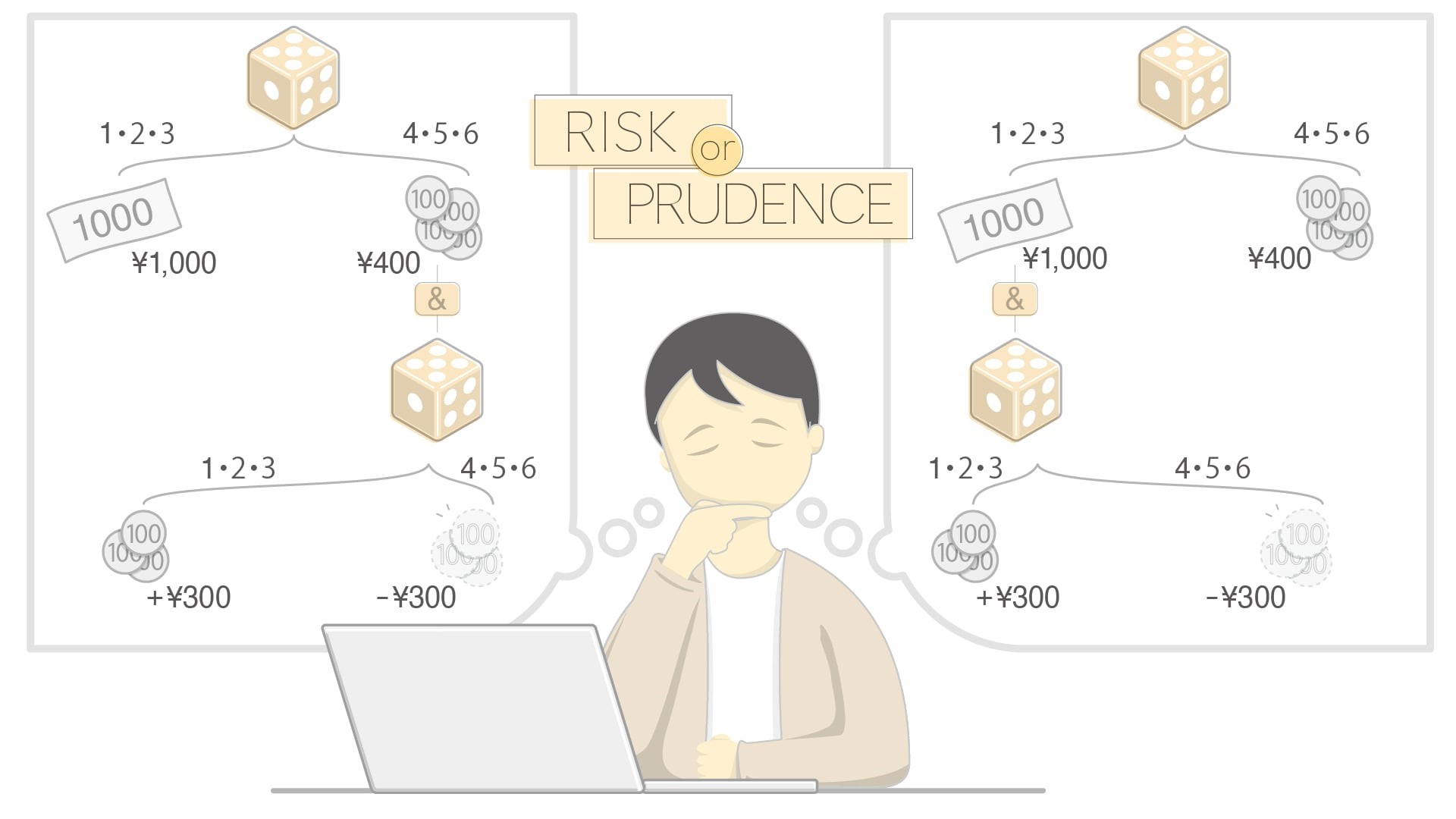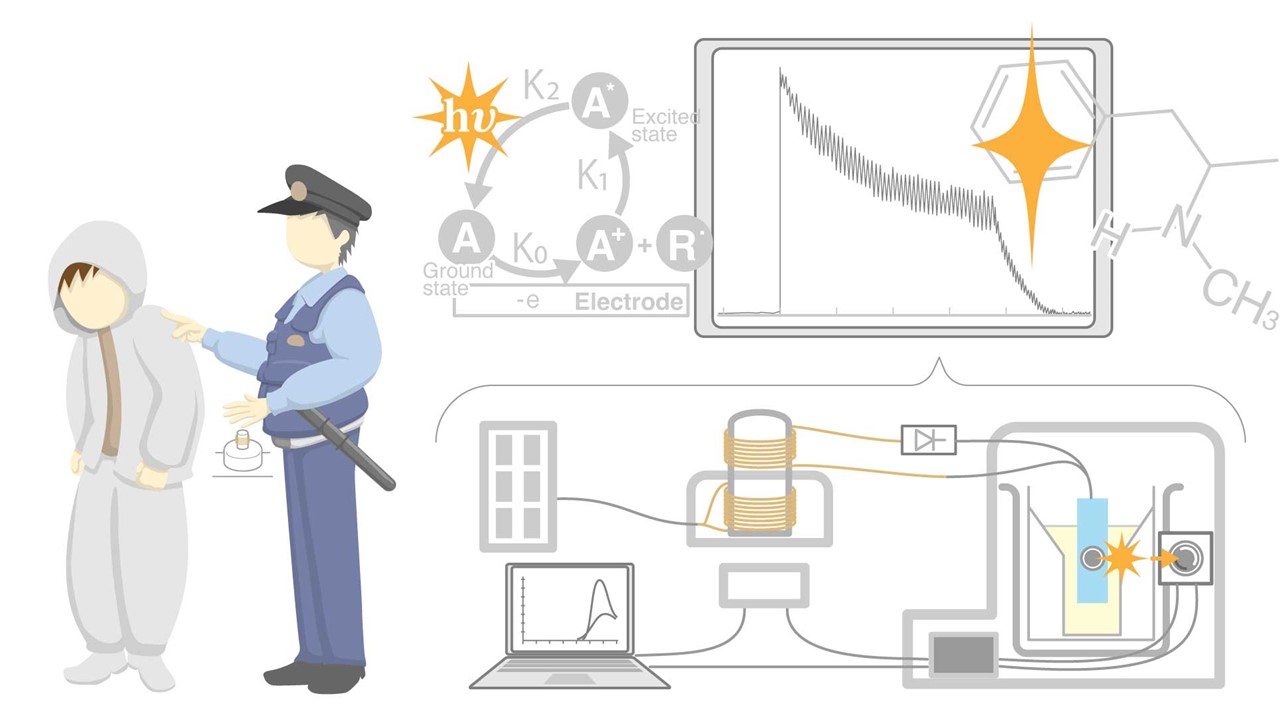Natural Sciences, Social Sciences, and Humanities
Release date:April 22, 2025 11:19 AM
Faculty of Economics and LawDiscrepancies between risk attitudes and prevention behavior: examination of human decision-making through an economic experiment

Traditional economic theory suggests that individuals with a more prudent attitude toward risks are more proactive in terms of adopting preventive behavior; however, empirical studies examining this theory remain scarce. Therefore, an economic experiment (*1) using dice was conducted to evaluate the risk attitudes and prevention behavior of the study participants. In contrast to the prediction set forth by the theory, the experiment revealed that individuals with a more prudent attitude toward risks tended to exhibit reluctance in adopting prevention behavior. This discrepancy suggests the possible effect of an illusion on human probability perception. This knowledge may be transformed into research on group prevention behavior, such as countermeasures against infectious diseases, that will aid in designing effective social systems that consider the characteristics of human behavior.
Experimental examination of the effect of “prudence” on preventive behavior toward future risks
Various decisions, such as installing surveillance cameras to deter thieves and enrolling in a smoking cessation program to reduce future health risks, are made to mitigate the risks encountered in daily life. Self-prevention or “self-protection” (*2) issues refer to situations wherein future risks are reduced through current investments. The traditional economic theory suggests that individuals with a prudent attitude (prudence) toward risks are proactive in terms of adopting preventive behavior. However, few empirical studies have examined the accuracy of this theory, known as the “expected utility model,” in explaining actual human behavior.
Our findings were contradictory to the model described in traditional textbooks
An economic experiment was conducted by Associate Professor Masuda and his colleague to analyze how individuals make decisions to mitigate risks. The participants were presented with a choice task using dice. The participants were permitted to roll the dice multiple times, and a reward ranging from a few hundred yen to a little over a thousand yen was awarded to them depending on their choice and the outcome of the dice roll. The “level of prudence” of the participants was measured based on their choice between an uncertain large reward and a certain small reward. The willingness of the participants to adopt preventive behavior, such as “how many surveillance cameras should be installed to prepare for the risk of burglary,” was examined based on the results. Notably, the findings of the experiment revealed a trend that was discordant with the traditional theory. In contrast to the expected finding, participants with a prudent attitude toward risks tended to exhibit reluctance in adopting preventive behavior. This finding indicates that human beings may not accurately perceive probabilities. For instance, the illusion of probability influences the adoption of preventive behavior, such as underestimating the effect of installing additional surveillance cameras.
Solving social issues by expanding the scope of our research from “individuals” to “groups”
Although our research thus far has focused on “individual preventive behavior,” in the future, its scope can be expanded to “group preventive behavior.” In particular, we aim to study decision-making mechanisms in situations wherein individual preventive behaviors have an effect on others, such as the prevention of infectious diseases and responses to the “free rider problem” (wherein individuals do not adopt preventive behavior and benefit from the preventive behavior of others). This study aimed to provide accurate insights into the characteristics of human behavior and contribute to designing social systems based on this understanding. Building a system that encourages the adoption of effective preventive behaviors and considers biases in risk perception will aid in solving various social issues in the future.
Points
The traditional economic theory suggests that individuals with a prudent attitude toward risks are more proactive in terms of adopting preventive behavior; however, few empirical studies have examined the consistency between the theory and actual human behavior.
An economic experiment was conducted in this study to examine the risk attitudes and preventive behavior of the participants. The findings of our study indicate that participants with a prudent attitude toward risks tended to exhibit reluctance in adopting preventive behavior, which is in contrast with the prediction of the traditional theory. This finding indicates the possible effect of an illusion on human probability perception.
We aim to expand the scope of our research from individual to group preventive behavior and examine decision-making mechanisms for the prevention of infectious diseases and other issues, as well as responses to the free rider problem, thereby contributing to designing social systems that consider the characteristics of human behavior.
Keywords
- *1. Economic experiment
An economic experiment is defined as a research method that observes human economic behavior in a laboratory environment to assess the accuracy of economic theories. The participants are presented with realistic financial incentives to make a decision, and the principles of economic behavior are analyzed based on their choice. Economic experiments have been conducted to assess the validity of theoretical models and examine the extent of consistency between actual human behavior and theories.
- *2. Self-prevention issues (self-protection)
Self-protection refers to an economic problem that pertains to situations wherein future risks can be reduced through current investments. Our research aims to elucidate the relationship between attitudes toward risks and preventive behavior. For instance, we are studying the decision-making mechanisms that reduce the probability of future risks, such as burglary and illness, through the adoption of preventive behavior, such as installing security cameras and quitting smoking.
Paper
Journal:Experimental Economics (2019) 22, 197–215
Title:Higher order risk attitudes and prevention under different timings of loss
Author:Takehito Masuda, Eungik Lee
Related Topics
Related Topics
-

Faculty of Science
Creating species diversity: Analyzing the genes of organisms present in the harsh environments of alpine zones
-

Faculty of Engineering
Impact of binary interactions on the evolution of supernova progenitors
-

Center for General Education
"Dust torus" influences ionization bias in the gas around quasars, providing clues to understanding the formation of stars
-

Faculty of Economics and Law
Discrepancies between risk attitudes and prevention behavior: examination of human decision-making through an economic experiment
-

Faculty of Science
Development of analytical technology for the safe and easy detection of controlled drug toxicants
